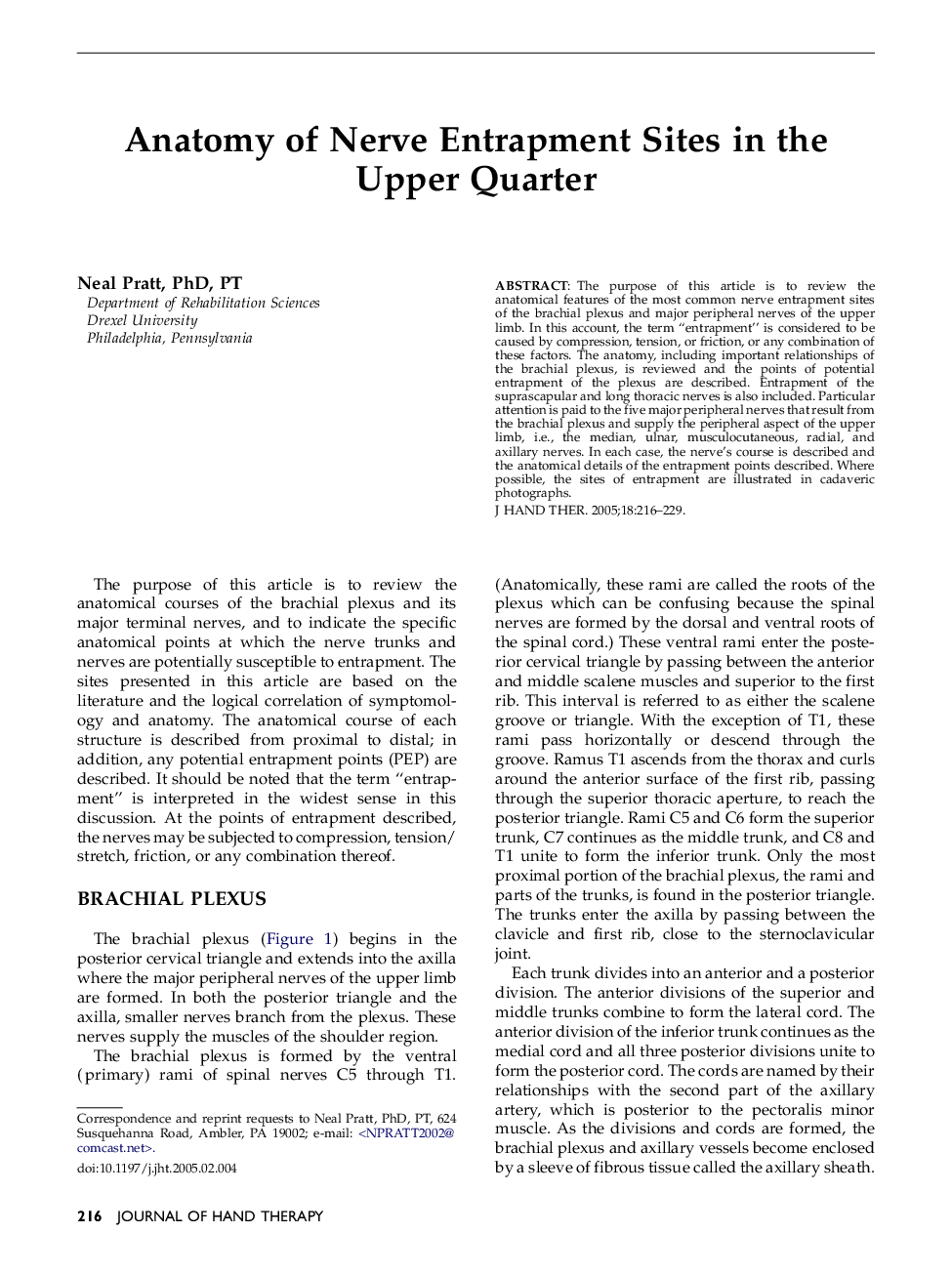| Article ID | Journal | Published Year | Pages | File Type |
|---|---|---|---|---|
| 9075137 | Journal of Hand Therapy | 2005 | 14 Pages |
Abstract
The purpose of this article is to review the anatomical features of the most common nerve entrapment sites of the brachial plexus and major peripheral nerves of the upper limb. In this account, the term “entrapment” is considered to be caused by compression, tension, or friction, or any combination of these factors. The anatomy, including important relationships of the brachial plexus, is reviewed and the points of potential entrapment of the plexus are described. Entrapment of the suprascapular and long thoracic nerves is also included. Particular attention is paid to the five major peripheral nerves that result from the brachial plexus and supply the peripheral aspect of the upper limb, i.e., the median, ulnar, musculocutaneous, radial, and axillary nerves. In each case, the nerve's course is described and the anatomical details of the entrapment points described. Where possible, the sites of entrapment are illustrated in cadaveric photographs.
Related Topics
Health Sciences
Medicine and Dentistry
Orthopedics, Sports Medicine and Rehabilitation
Authors
Neal PhD, PT,
